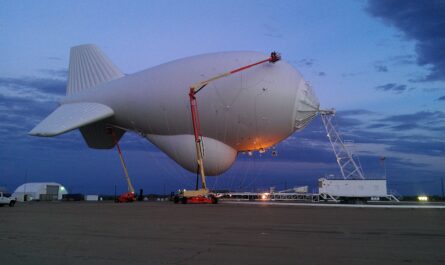Aviation’s Drive for Sustainability
The aviation industry has come under increasing pressure in recent years to reduce its environmental impact. Aircraft emit carbon dioxide, nitrogen oxides, particulate matter and water vapor into the atmosphere, all of which contribute to global warming. International air travel accounts for approximately 2-3% of global carbon emissions. With passenger traffic expected to grow significantly in the coming decades, aviation emissions are projected to rise substantially if no action is taken. Recognizing the urgency to decarbonize the sector, leading aircraft manufacturers, airlines and governments have jointly committed to ambitious sustainability goals.
A Greener Fleet Through New Technologies
Leading the charge are efforts to develop Zero Emission Aircraftthat don’t rely on fossil fuels. While commercial planes today are powered by gas turbines burning kerosene, researchers are exploring alternatives like electric and hydrogen aircraft. Battery technology is advancing rapidly, making electric planes with ranges of up to 100 miles a viable option for short haul flights. Companies like Eve Air Mobility, Ampaire and magniX are developing electric aircraft they aim to certify within the next few years. For longer routes, hydrogen is seen as a promising zero carbon fuel. By using fuel cells to convert hydrogen into electricity, which then powers electric motors, hydrogen planes could achieve the high energy densities needed for transcontinental travel.
Major Challenges Remain
However, bringing zero emission aircraft to market at scale still faces major challenges. Batteries powerful enough to enable transcontinental electric flight with payloads of 100 passengers are likely a decade or more away. Hydrogen planes require developing infrastructure to produce, transport and store cryogenic liquid hydrogen safely and affordably. To achieve fleets of hundreds or thousands of aircraft, costs of such new technologies must come down significantly to be competitive with conventional jets. Tough regulatory certification proving the airworthiness and safety of radically new aircraft designs will also be required. Despite progress, most industry analysts think hybrid or sustainable aviation fuel solutions are more likely to play a bigger role in the nearer term for reducing emissions.
Pioneering Projects under Development
Nonetheless, visionary startups and major manufacturers are investing heavily in ambitious zero emission aircraft programs. Airbus unveiled plans for a hydrogen-powered concept plane dubbed ZEROe that could enter service by 2035. It envisions three types of hydrogen plane – turbofan jets using hydrogen combustion, turboprops relying on gas-turbine engines and fuel cells powering electric motors. Rolls-Royce is collaborating with easyJet to develop electric and hydrogen plane designs. Their ‘Spirit of Innovation’ all-electric plane completed its maiden flight in 2021 and aims to fly passengers within three years. Canadian startup magniX powers the all-electric Cessna Grand Caravan eBeaver, proving the viability of electric propulsion.
Government Support Rallying
As the technical barriers seem surmountable in the long-run if challenges are addressed systematically, governments are lending their support to catalyze innovations. The US and EU have each announced multi-billion dollar funding programs for zero emission aerospace initiatives. California and Quebec have set ambitious mandates requiring a certain percentage of aviation fuels to be sustainable by 2030. Aircraft manufacturers are also benefiting from incentives to boost R&D in green technologies. Such policy measures aim to establish early markets, build infrastructure and drive down costs to make zero emission options commercially competitive for airlines and consumers in the long-term.
A Greener Future Within Reach
While fossil fuel guzzling jets are likely to remain dominant on busier longer routes for at least another decade, the seeds of a zero emission revolution in aviation are clearly being sown. With continued progress in electrification and hydrogen, the prospects of seeing all-electric and hydrogen-powered aircraft flying short and medium haul passenger flights within the 2030s now seem highly plausible. Major breakthroughs are still needed, but the sector is leaving no stone unturned to cut emissions through ambitious sustainability roadmaps and projects bringing the latest technologies to reality. With growing governmental support worldwide, the future of flying could well be zero emission within our lifetimes.



